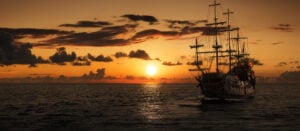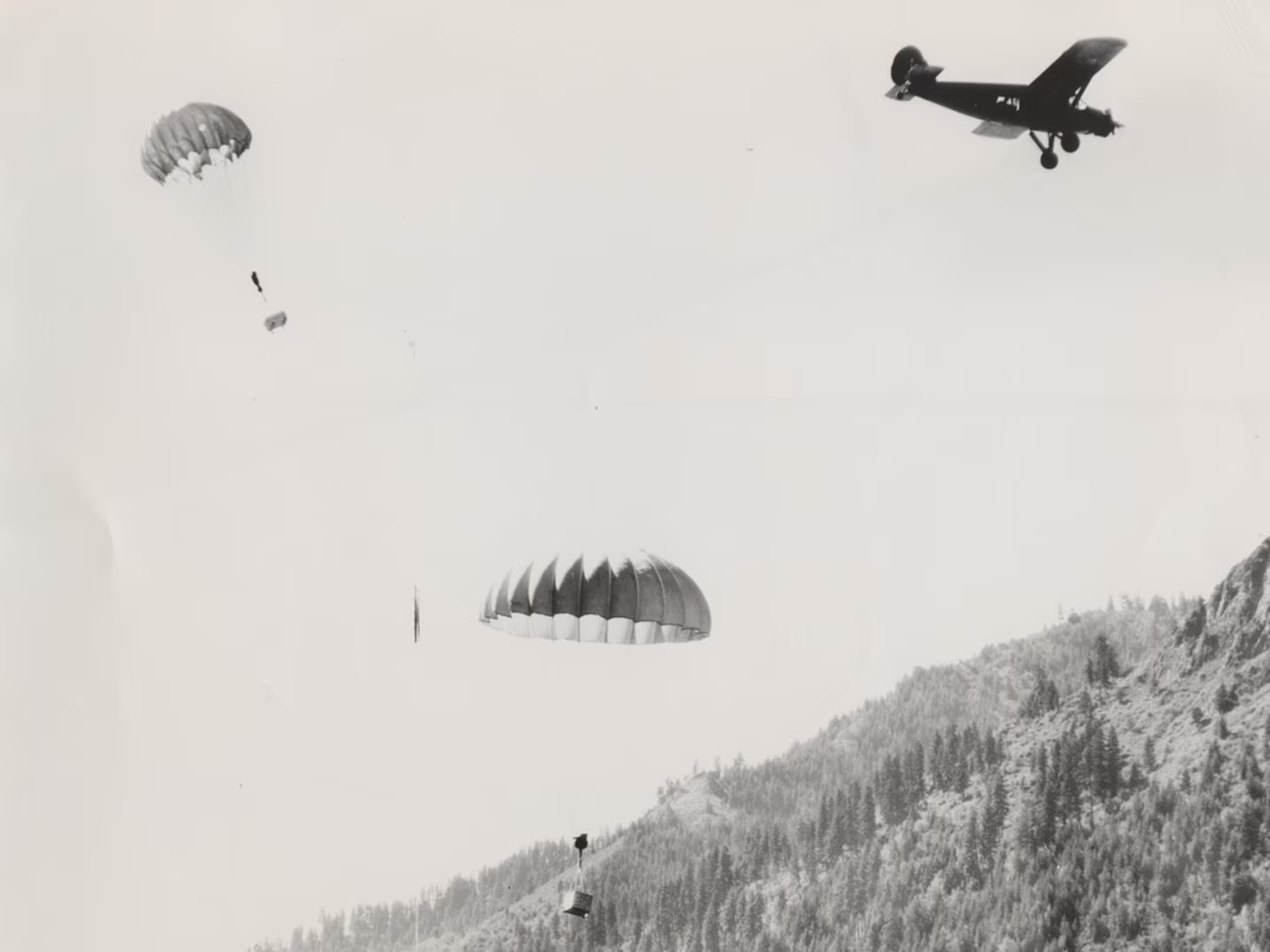This is Deception Island. Located just off the edge of Antarctica, it’s the shape of a horseshoe and the emerald blue water in the middle hides something rather more powerful underneath. Shrouded in mystery and with a fascinating history, this place is now visited by 15,000 visitors a year. Though the tourism industry is relatively new, Deception Island is perhaps Antarctica’s most storied port of commerce.
That is despite the fact the entire island is actually an active volcano…
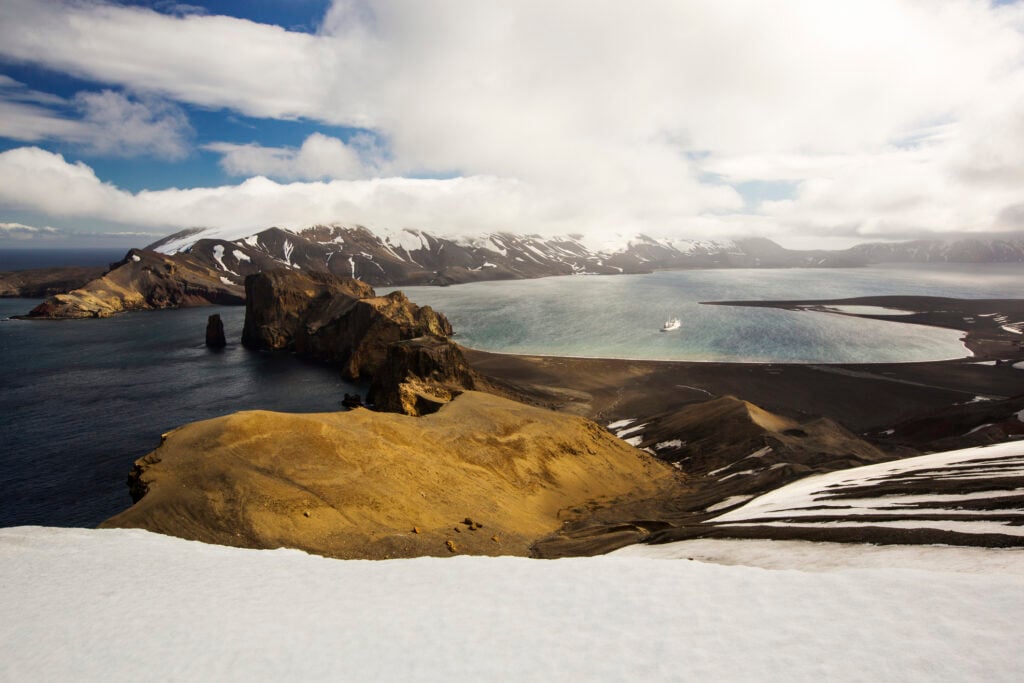
The name Deception Island disguises its true identity, as one of only two active volcanoes in Antarctica. Its port, known as Port Foster, is the flooded crater of a volcano, with its distinctive shape formed by a violent eruption 10,000 years ago. It is believed to have blown the top off the mountain, creating a space that seawater could access. The result is one of the few places in the world where boats can sail directly into the centre of an active volcanic caldera.
The volcano in the South Shetland Islands has seen far more recent eruptions than 10,000 years ago, however, with three major ones as recently as 1967, 1969 and 1970. At that time, scientific research stations were operating on the island, and both Chilean and British manned outposts were destroyed by the volcano. In the aftermath, the island was abandoned, though much of the infrastructure from that time remains today.
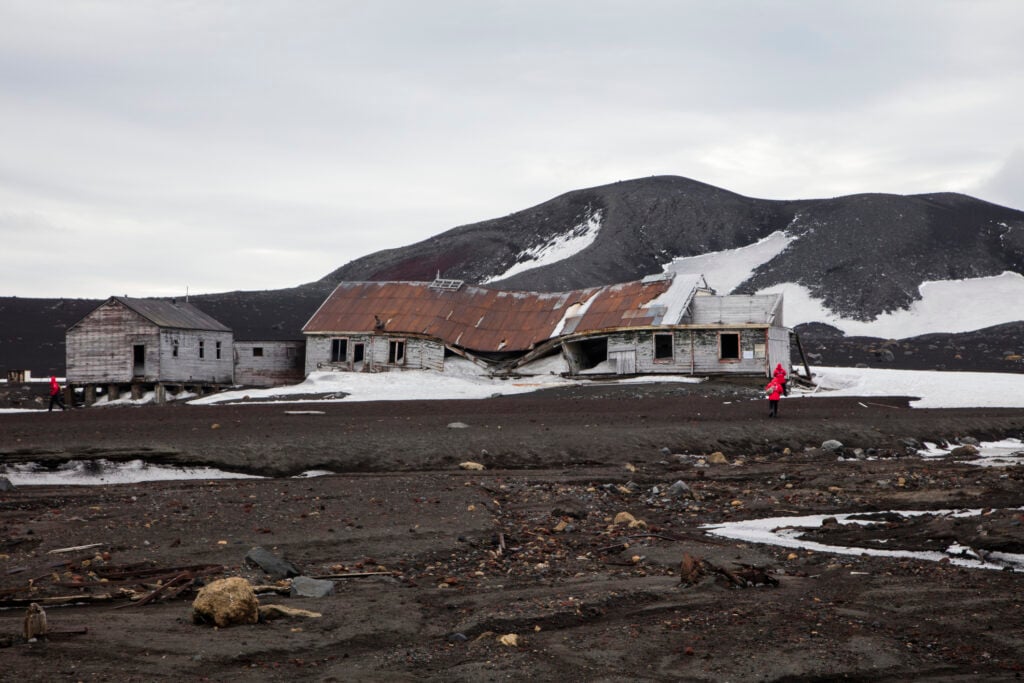
Unsurprisingly, the volcano has spent the vast majority of its life uninhabited by humans. Its first known discovery came only in 1819, by British sailor William Smith. It was then visited by the American seal hunter Nathaniel Palmer, who is said to have coined the name ‘Deception’ due to the hidden central lagoon.
Palmer was involved in the brief seal hunting industry on Deception Island, which came to an end in the mid-1820s with the South Shetland seal population all but extinct. Deception Island never had as many as neighbouring islands, but its location and protection from the wind made it an easier place for the hunters to rest and set up bases.
The second wave of Deception Islanders came nearly 80 years later and lasted for a lot longer. In 1912, Norwegian whalers arrived and built the only land-based commercial whaling station in the Antarctic. It was again an ideal location to establish a base, and the whalers built residences, a kitchen, a hospital and a small cemetery on the island. Pigs were kept for food, and the hunted whales were processed in Deception’s protected cove.
Read More: This is the world’s most remote lighthouse
During the height of the summer, it’s believed that 500 people could have been living on Deception Island. The whalers worked predominantly on floating factory ships, processing vast amounts of whale blubber into whale oil, a valuable commodity in the early 20th century. As many as a dozen of these factories operated on the island at once, and again the infrastructure from this whaling boom on the Southern Shetland remains to this day, with silos and boilers still standing, a century on.
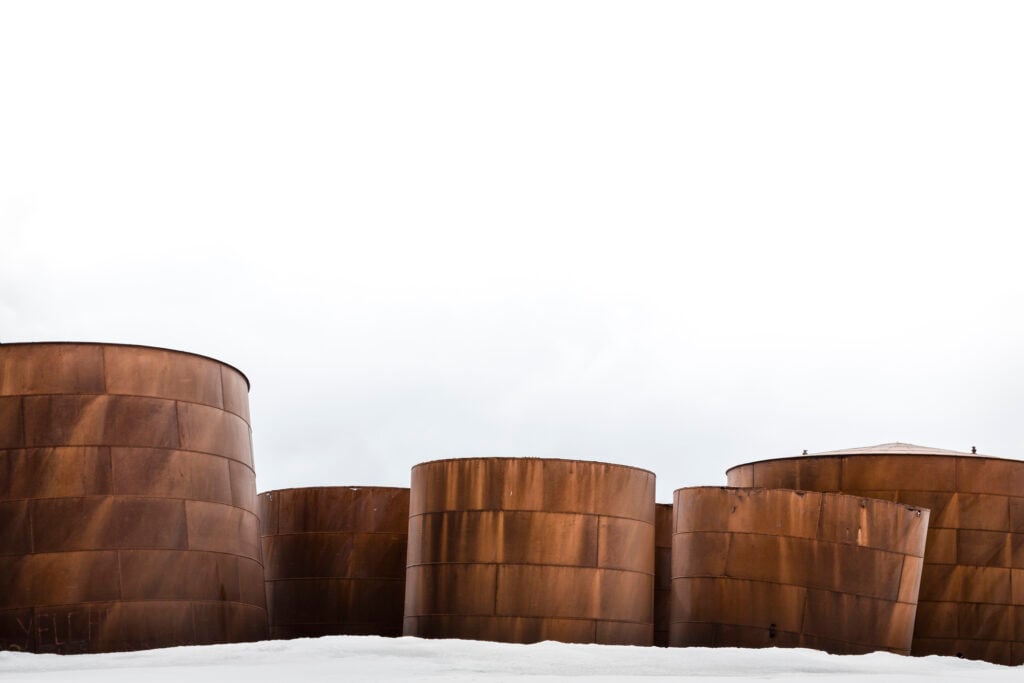
Nigel Milus, a polar historian, gave a glimpse into what life was like for whalers living on Deception Island at the time, by quoting the Australian polar explorer and pilot, Sir Hubert Wilkins’ account of the New Year’s Eve celebrations back in 1928.
“One of the whalers thrust his long knife into this veritable whale-balloon, which promptly exploded, hurling both men into the harbour, where they had to be rescued by some of the few sober observers. Meanwhile, two other whalers had decided to ignite an explosives barge that was moored to the beach [which] contained 65 tonnes of black powder and other combustibles.”
Wilkins had accessed the island with the first known flight antarctic flight, on a makeshift volcanic ash runway nearby Deception’s ‘Whalers Bay’.
For over 20 years, Deception was the sight for large-scale whaling, but in 1931, with the price of whale oil falling, the whalers left Deception Island behind. Scientists from Chile and Britain moved to the volcano in their place.
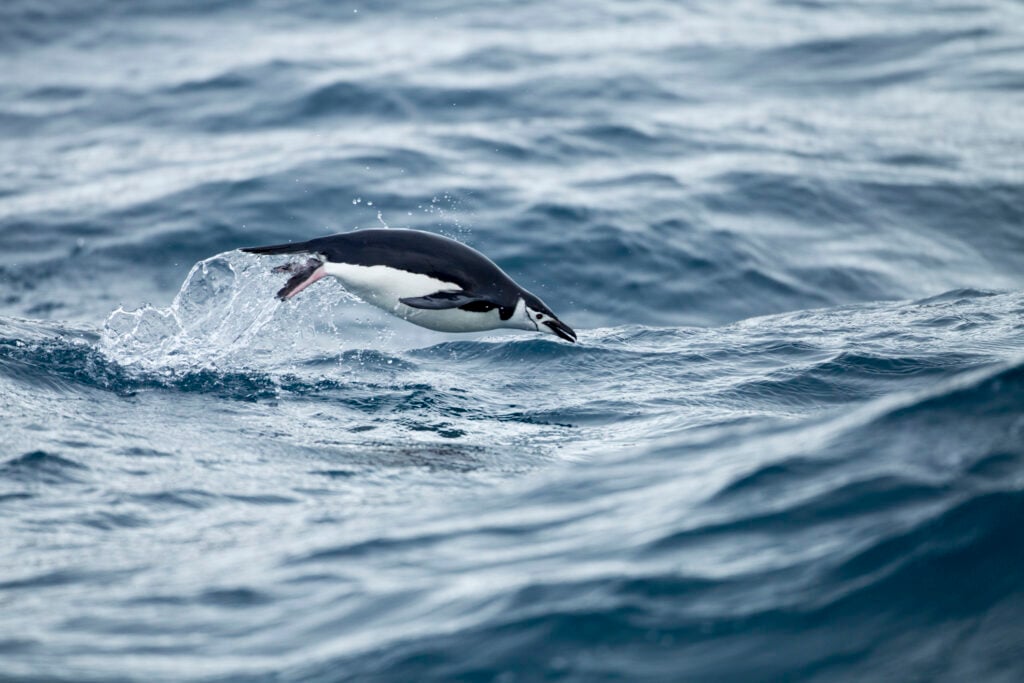
The eruption of 1967 was enough to put the Chileans off returning. Their entire team survived the blast unharmed, though their base was destroyed. British scientists persisted, until 1969 at least, when the second eruption in three years deterred them, too. Nowadays, it is just Spain and Argentina who operate summertime bases on the island, monitoring the volcano’s seismic activity.
It is penguins, however, who are Deception Island’s most populous species. Bailey Head, on the easternmost part of the island, is home to almost 400,000 chinstrap penguins – the largest colony of the chinstraps in the world. Other penguins and seabirds stop there, with seals also returning to the island. For a site of so much destruction, and, in the early 20th century, so much death, the continual survival of natural life on an active volcano is rather more uplifting than other parts of Deception Island’s history.


